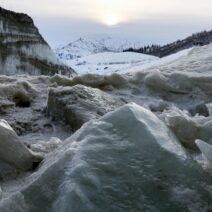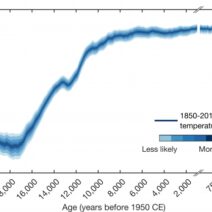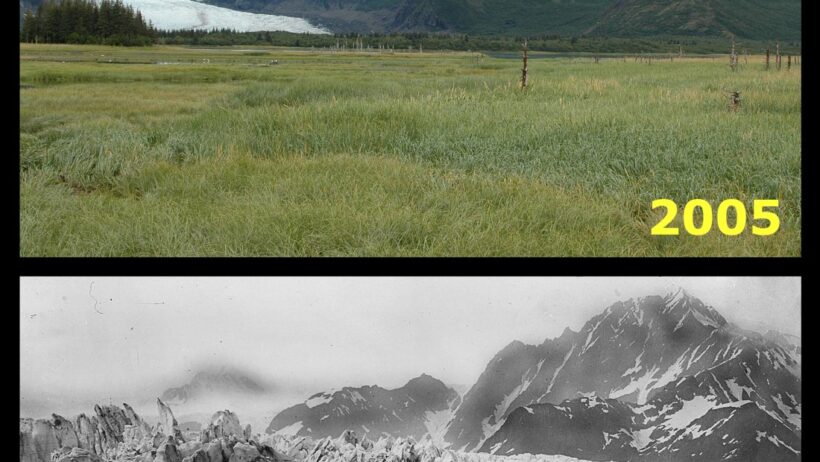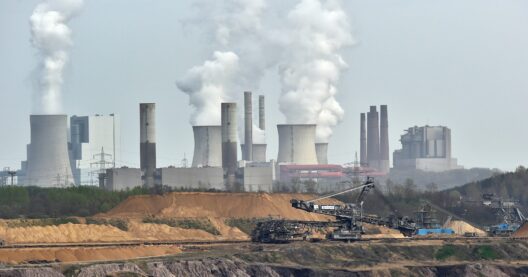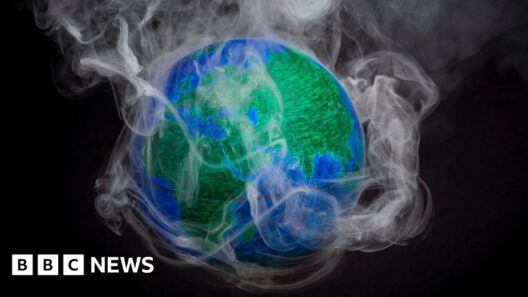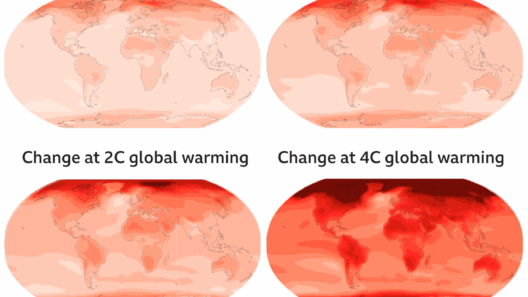Global warming is an ominous reality that is manifesting in numerous ways across the globe. One of the most tangible and alarming consequences of this phenomenon is the accelerated melting of ice in polar regions and glaciers, contributing to rising sea levels. As temperatures continue to rise, the implications of this ice melt extend far beyond mere environmental changes; they encompass ecological, social, and economic ramifications that pose risks to our very existence. The melting ice stands as a symbolic and literal testament to the dire situation our planet faces.
To understand the severity of the situation, it is crucial to differentiate between the various types of ice that are affected by global warming. Sea ice, glacial ice, and ice sheets are the primary categories, each with its own distinct characteristics and implications for the Earth’s climate system.
Sea Ice
The extensive expanses of sea ice in the Arctic and Antarctic are among the first victims of rising global temperatures. Sea ice plays an essential role in regulating the Earth’s climate by reflecting sunlight and maintaining cooler ocean temperatures. Yet, as the planet warms, this crucial barrier diminishes in both extent and thickness. The Arctic sea ice extent has been declining at an alarming rate, with recent years marking record lows. This reduction not only affects local ecosystems, such as polar bears and seals, that depend on the ice for habitat and hunting grounds, but it also accelerates global warming itself. The loss of reflective ice exposes darker ocean surfaces, which absorb heat, exacerbating the warming process in a vicious cycle.
Glacial Ice
Glaciers, the majestic rivers of ice that traverse mountainous terrains, are also succumbing to warmer temperatures. Glacial retreat is witnessing unprecedented speed, with many glaciers shrinking to the point of disappearance in mere decades. The melting glacial ice contributes significantly to rising sea levels. For instance, glaciers in the Himalayas and the Andes are critical freshwater reserves for millions of people, and their disappearance threatens water security for populations dependent on meltwater for agriculture and consumption. Furthermore, the loss of glaciers alters local biodiversity, impacting flora and fauna that have adapted to specific ecological niches formed around glacial environments.
Ice Sheets
Among the most extensive ice formations are the ice sheets covering Greenland and Antarctica. These colossal structures hold the potential for catastrophic implications for the planet’s future. The Greenland Ice Sheet is melting at such an alarming rate that scientists predict it alone could raise global sea levels by several meters if extensive melting continues unabated. Similarly, the West Antarctic Ice Sheet has shown signs of instability, raising concerns over rapid disintegration. This leads to fears of runaway melting scenarios, whereby the collapse of one section triggers further loss due to destabilized ice dynamics.
The implications of melting ice extend beyond just the loss of natural beauty and the increase in sea levels. Coastal communities worldwide face grave threats from encroaching seas. Cities such as Miami, New Orleans, and coastal regions in Bangladesh are already experiencing more frequent flooding events. It is becoming increasingly apparent that millions of people may become climate refugees in the coming decades, forced to abandon their homes due to rising waters and extreme weather conditions exacerbated by ice melt.
Moreover, the ecological consequences of melting ice impact marine ecosystems. The reduction of sea ice alters ocean currents and temperatures, affecting fish migration patterns and the overall health of marine biodiversity. Species that rely on stable climate conditions are put at risk, leading to cascading effects throughout the food web. This disruption can have far-reaching effects on fisheries, food security, and coastal livelihoods.
Global and Local Response
Addressing the challenge of melting ice due to global warming necessitates a multi-faceted approach. Numerous international agreements aim to mitigate climate change, such as the Paris Agreement, which calls for reducing greenhouse gas emissions and limiting global warming to well below 2 degrees Celsius. Efforts to transition to renewable energy sources and enhance energy efficiency are gaining momentum, as they directly correlate with the reduction of global temperatures.
On a local level, communities are increasingly focusing on climate adaptation strategies to bolster resilience against the inevitable impacts of rising sea levels. Constructing sea walls, restoring natural environments such as wetlands, and implementing sustainable land-use practices represent proactive measures that can help mitigate the effects of melting ice.
In addition to technological and infrastructural solutions, education plays a pivotal role in addressing the discourse surrounding melting ice and global warming. Informed citizens can advocate for policy changes that prioritize environmental preservation and climate action. Raising awareness about the profound implications of ice melt can galvanize public support for initiatives aimed at combating climate change.
In conclusion, the melting ice serves as an urgent reminder of the realities of global warming. The complexity of its impact on our planet, from rising sea levels to ecological disruption, highlights the multifactorial nature of climate change. Collective acknowledgment of this crisis is crucial for implementing effective solutions. The fight against global warming is not just an environmental issue; it is a matter of social justice, economic considerations, and a necessity for future generations. It is imperative that we act, understanding that the fate of our ice-covered regions is inexorably intertwined with the fate of our world.

